Amidst coronavirus, I’m sticking to what I – and a lot of other people – love most: cooking and baking. One challenge I’ve presented to myself is to make a dish (or dishes) of international cuisines every week, learn some words from the language, and e-visit some of the country’s landmarks. Some of these dishes will be more complex than others, based on what ingredients I have available in the house.

This year, I had the incredible opportunity to see José Andrés at Tufts, as part of the Tisch College Distinguished Speaker Series. José Andrés is a Spanish-born chef, educator, humanitarian, and was twice named Time’s “100 Most Influential People” list, and was even awarded with the National Humanities Medal by President Obama in 2015. He founded the nonprofit World Central Kitchen, which is a chef-driven humanitarian and disaster relief operations. While his credits go on and on, he was humble, funny, and undeniably passionate about cooking and food policy. One of my favorite quotes from that evening was when Andrés was recounting making paella with his dad, who said, “If you can control the fire, you can do any cooking you want.”
Since seeing Andrés in December, he’s been on my mind and popping up in my quarantine activities. He was on CNN a couple weeks ago, talking about his World Central Kitchen. And in my HarvardX edx course of “Science & Cooking: From Haute Cuisine to Soft Matter Science”, Andres is one of the guest lecturers. I took all of these happenings as a sign that my next country should undoubtedly be Spain.
Vamos!
Spanish cuisine has had many influences. Before the Roman Empire, Spain was divided into three territories, with each their own influences. The Celts (Northern Spain) were known for fishing, the Iberians (Center Eastern Spain) were mainly hunters, and the Tertessos (Southern Spain), did a lot of trading with Africa and Greece, bringing about a more mediterranean influence.
Lunch in Spain is the largest meal of the day, with multiple courses, and starts usually between 2-2:30, ending around 3-3:30. Tapas (appetizers) are served right before lunch or dinner or during them.
THE DISH: MULTI-VEGETABLE PAELLA (GF + V)
With Andrés in mind, I decided to start off my Spanish exploration with paella. Paella is said to be best in Valencia, which is a city that rests next to the Mediterranean sea. Some believe that the world paella originates from the Arab word “baqiyah,” which means leftovers. Paella however literally means pan. Paella is traditionally cooked over an open fire (hence Andres’ father telling him to control the fire).
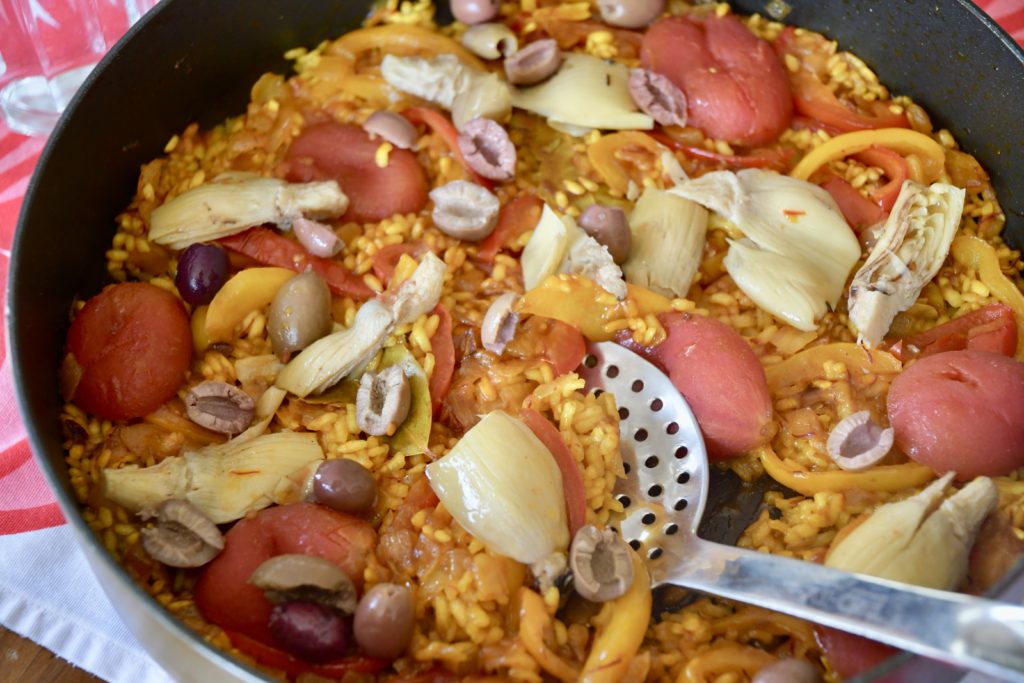
Paella varies depending on the region. Paella valenciana consists of rice (arroz), green beans (judías verdes), rabbit (conejo), chicken (pollo), lima bean (poroto pallar), artichoke hearts (corazón de la alcahofa), olive oil (aceite de oliva), and saffron (azafrán). Paella valenciana was originally a lunchtime meal for farmers and workers. Paella de marisco swaps meat with seafood, and does not include green vegetables. Lastly, paella mixta mixes meat, seafood, vegetables, and sometimes beans, with the rice.
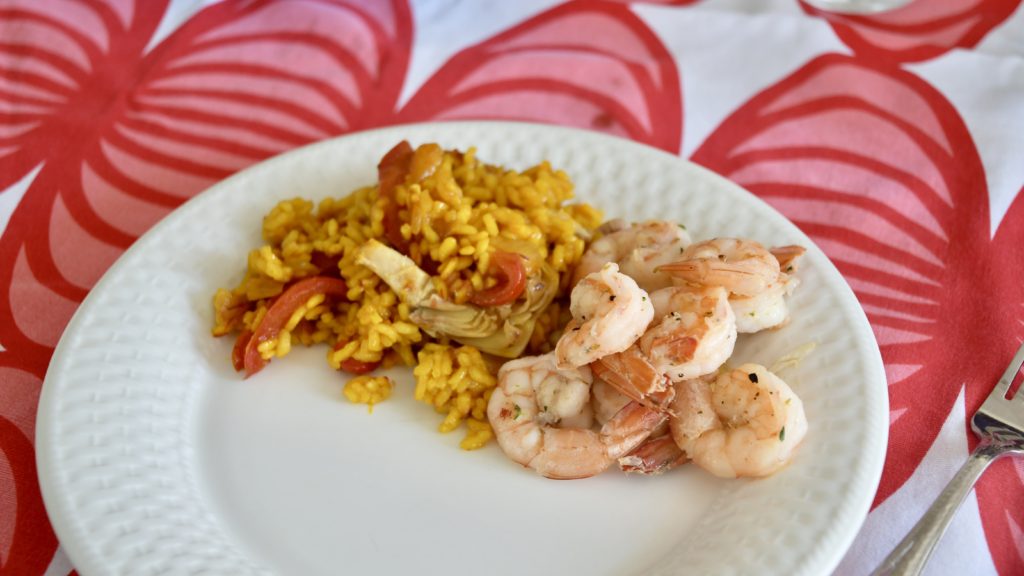
Similar to risotto, paella uses a particular short grain rice. What arborio rice is to risotto, bomba rice is too paella. Since I didn’t have bomba rice at home, I used arborio rice. Arborio rice has a creamier texture due to higher amylopectin content (one of the components in rice).
As I am a devoted Ottolenghi fan, I chose to follow his vegan multi-vegetable paella from his book PLENTY. He writes that this serves two generously, but I think it’s best suited for four to five people, especially if you have other dishes on the side.
In the future, I would like to try Andrés’ recipe (I didn’t have clam broth).
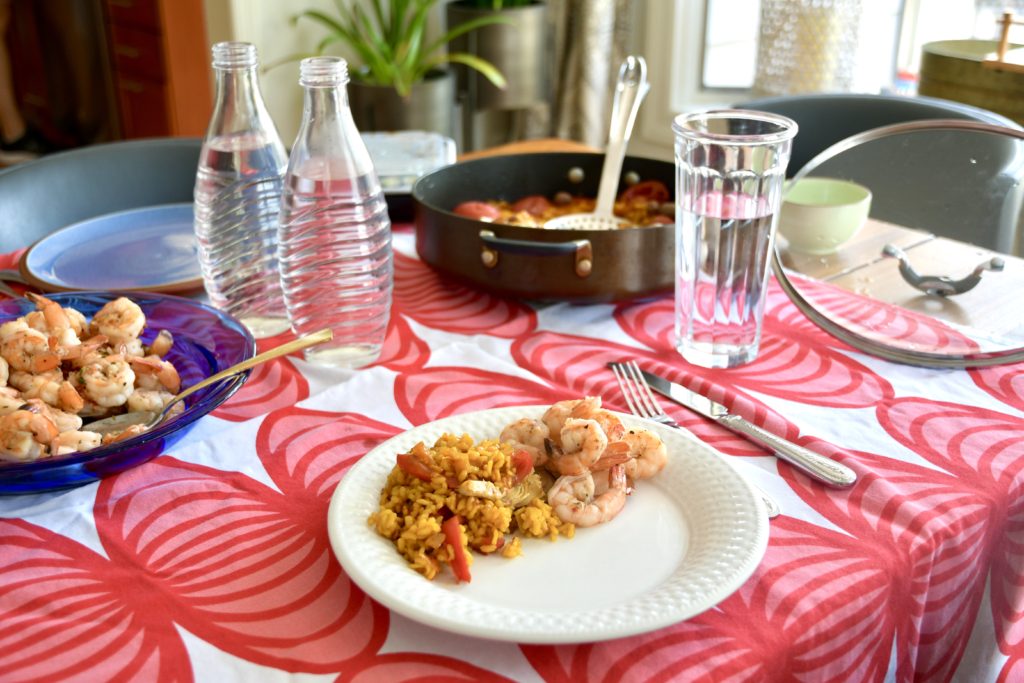
Recipe: Multi-vegetable paella
- Note: I didn’t have fava beans on hand, so for my protein part of the dish, I used shrimp. You could probably sub in fava beans with peas.
What I particularly like about this recipe is that nearly every ingredient is shelf-friendly (garlic, onions, artichokes, rice, etc.). If you don’t have fresh bell peppers, you could even use jarred peppers and canned tomatoes.
USEFUL WORDS
Onto the language section. Last time I took Spanish was back in 5th grade, so I definitely needed a refresher. There are over 450 million native speakers of Spanish, making it the second most prominent language in the world. Here are some helpful words and phrases should the occasion to speak Spanish come (which, according to the previous statistic, is highly likely).
Greetings
- Hola –> Hi
- Buenos días –> Good morning or Good day
- Adiós –> Good bye
- ¿Cómo estás? (Informal) and ¿Còmo está usted? (Formal) –> How are you?
- RESPONSE: Estoy bien, gracias –> I’m fine, thank you.
Conversation
- ¿De dònde eres? (Informal) and ¿De dònde es usted? (Formal) –> Where are you from?
- RESPONSE: Soy de ___ –> I’m from ___
- ¿Cómo te llamas? (Informal) and ¿Cómo se llama usted? (Formal) –> What’s your name?
- RESPONSE: Me llamo ___ –> My name is _____
- ¿Qué te gusta hacer? –> What do you like to do?
- RESPONSE: Me gusta ___ –> I like to ____
- Cocinar – to cook
- Bailar – to dance
- Hacer deporte – play sports
- Viajar – to travel
- RESPONSE: Me gusta ___ –> I like to ____
- Me gustaría ____ –> I would like ____
- Mucho gusto –> Nice to meet you
- Gracias –> Thank you
- De nada –> You’re welcome
Slang
I think one of the best parts and ways of really getting a taste of a culture (besides the food) is to know its slang. Slang varies between Spanish-speaking countries. It’s really fun to include in conversations.
- Chaval(a) –> Kid, youngster
- Estar como uno cabra –> To be crazy
- Vale –> Let’s do it!
LANDMARKS
Alhambra, Granada

Located in Granada, Alhambra is a palace and fortress built in the Roman times. Alhambra eventually became the Royal Court of Ferdinand and Isabella, where Christopher Columbus received endorsement for his journey.
Park Güell, Barcelona
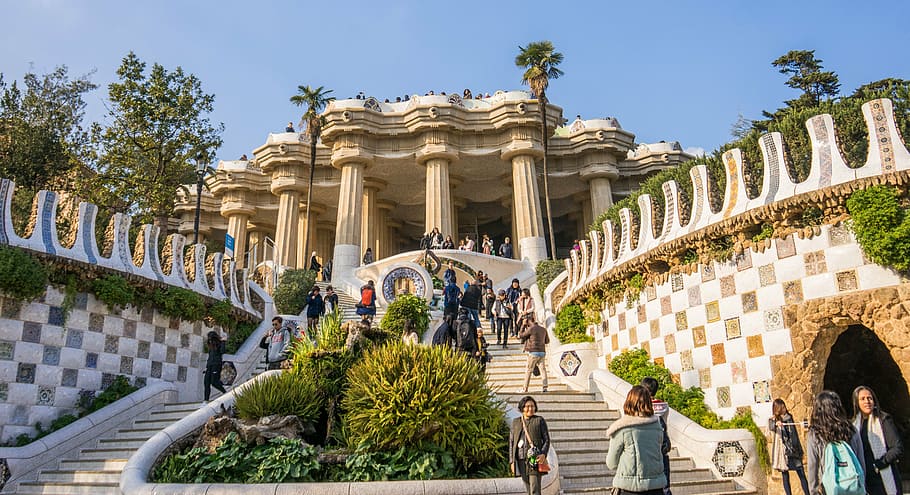
This park is designed by the famous architect Antonio Gaudí.
Palacio Royale, Madrid
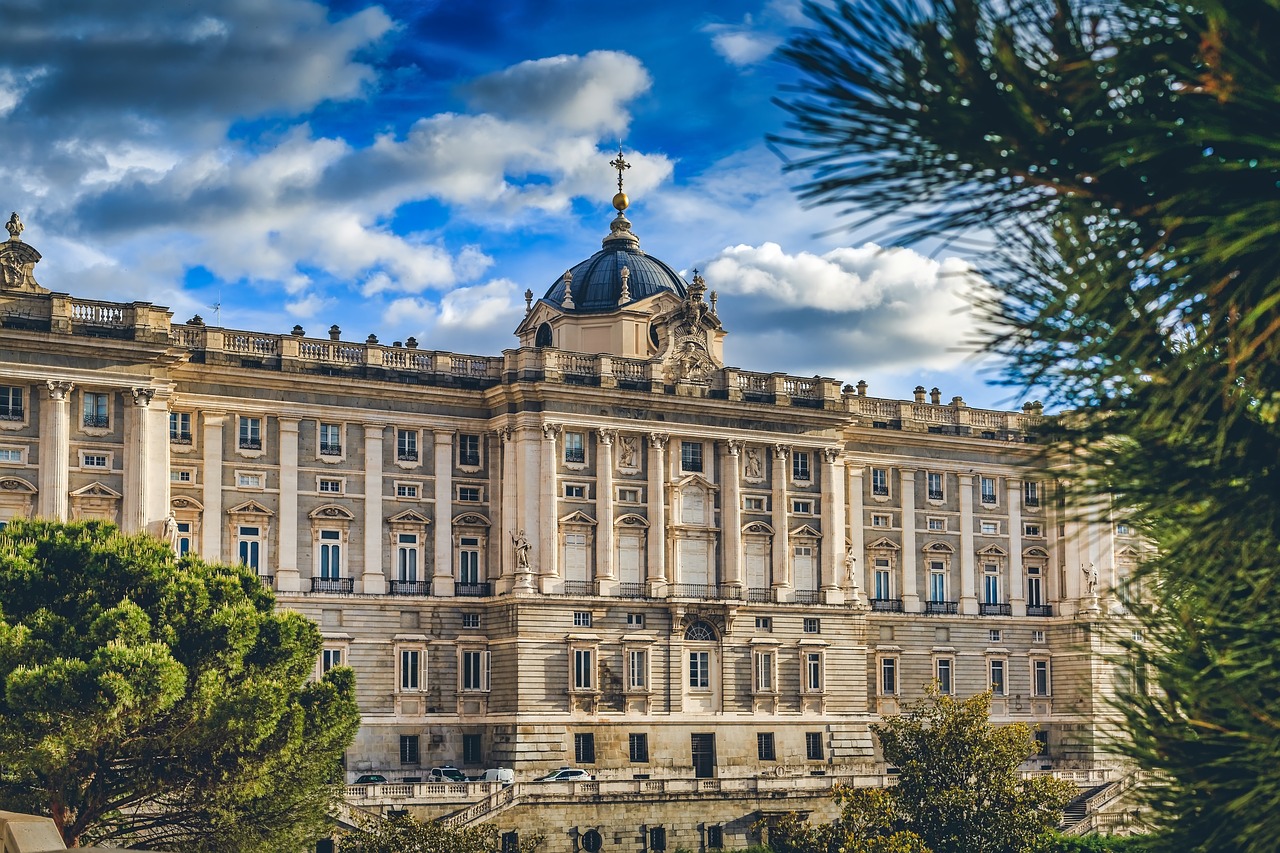
Palacio Royal is the official residence of the Spanish Royal family.
Sa Calobra, Mallorca

Sa Calobra is a small village in Mallorca, one of Spain’s Balearic Islands.
Best paella EVER!!!